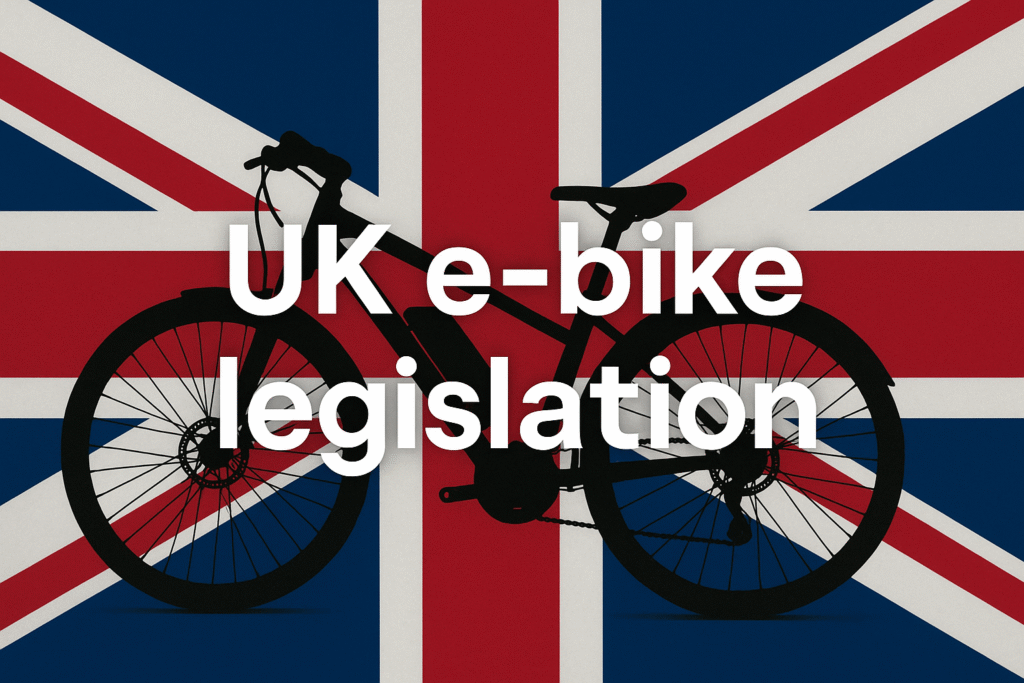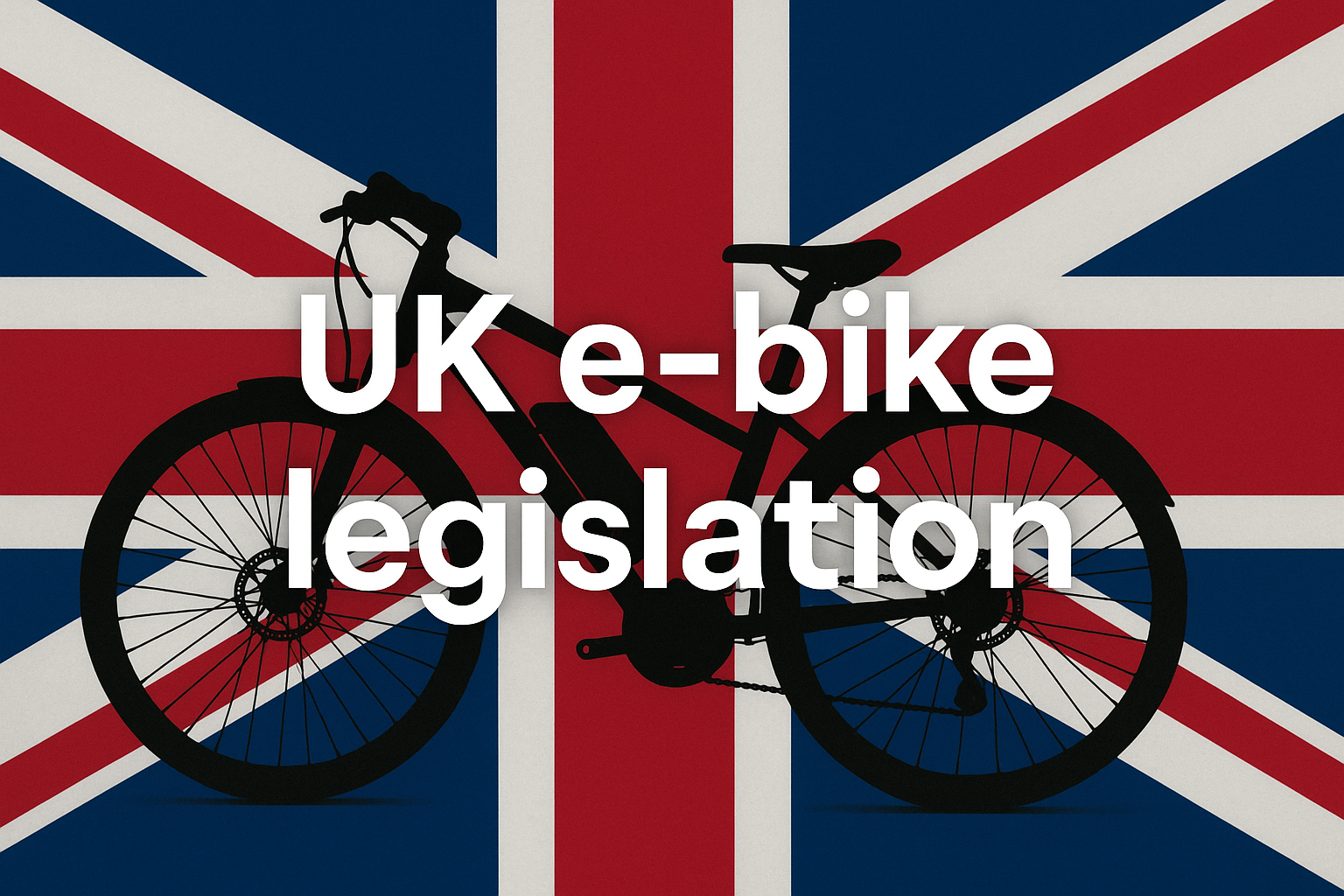
Electric bikes—also known as e‑bikes—are rapidly becoming a cornerstone of urban mobility in the United Kingdom. Favoured for their ease of use, sustainability, and cost-effectiveness, these battery-powered bicycles are now a common sight on roads and cycle lanes. But with their popularity has come growing concern around safety, regulation, and compliance.
This article provides a detailed guide to the current legal framework for e‑bikes in the UK, explaining who can ride them, how they’re classified, and what changes are on the horizon.
What Is an e‑Bike Under UK Law?
In the UK, electric bikes are legally recognised under a specific category known as Electrically Assisted Pedal Cycles (EAPCs). These are treated similarly to traditional bicycles, provided they meet certain criteria.
To qualify as an EAPC, the bike must have working pedals, and the electric motor must not exceed 250 watts of continuous power output. The motor can only assist while the rider is pedalling and must cut off when the bike reaches 15.5 mph (25 km/h). Any e‑bike meeting these requirements is legally allowed to be used on UK roads without a driving licence, vehicle tax, or insurance.
EAPCs must also display specific information on the frame, including the manufacturer’s details, the motor’s power output, and either the battery voltage or the maximum assisted speed.
To qualify as an EAPC, an e‑bike must:
- Be fitted with pedals that can propel it.
- Have a motor with a maximum continuous power output of 250 watts.
- Not provide power assistance when the bike exceeds 15.5 mph (25 km/h).
- Only deliver power while the rider is pedalling.
- Display specific manufacturer markings, including the motor’s power and the maximum assisted speed.
If your e‑bike meets all of these conditions, you can legally ride it on roads and cycle paths without needing a licence, insurance, registration, or vehicle tax.
Age Requirements and Where You Can Ride
Riders must be at least 14 years old to use an EAPC on public roads. No licence or formal training is required. As long as the bike complies with EAPC regulations, it can be used on public roads, cycle lanes, and bridleways. However, riding an e‑bike on pedestrian pavements is illegal unless explicitly permitted by signage.
This broad access makes EAPCs a convenient option for both commuting and leisure, but it also places the responsibility on riders to ensure their bike remains within legal specifications.
When an e‑Bike Becomes a Motor Vehicle
If an electric bike fails to meet EAPC standards, it is no longer classified as a bicycle. This includes bikes with motors over 250W, throttle-only operation (without the need to pedal), or assistance that continues beyond 15.5 mph.
Once it exceeds these limits, the bike is legally treated as a moped or motorcycle. This means it must be registered with the DVLA, and the rider is required to have a valid driving licence, insurance, vehicle tax, and wear an approved motorcycle helmet. Non-compliant e‑bikes are also prohibited from using cycle lanes, bridleways, and other infrastructure reserved for bicycles.
Selling or using such bikes on public roads without fulfilling these legal obligations is an offence and can lead to fines, bike seizure, or even prosecution.
Regulatory Gaps and Safety Concerns
Despite a clear legal framework, enforcement has struggled to keep pace with market realities. Online retailers and importers frequently sell high-powered bikes or illegal conversion kits that bypass regulations. These products are often labelled “off-road use only,” a loophole that has enabled widespread use on public roads.
A major safety concern has emerged around the batteries used in many of these non-compliant or poorly manufactured bikes. The number of fires caused by lithium-ion batteries has spiked dramatically—rising from just eight incidents in London in 2019 to 179 in 2023. In the first half of 2024 alone, over 200 battery-related fires were recorded across the UK.
These incidents have prompted urgent calls for reform, especially concerning the sale of unsafe batteries and DIY e‑bike kits that are not subjected to rigorous testing or oversight.
Government Response and Legislative Developments
In response to mounting safety concerns, several measures have already been implemented. Notably, Transport for London (TfL) has banned non-folding e‑bikes from all public transport networks—including the Underground, Overground, Elizabeth line, and DLR—since March 31, 2025. This came after multiple battery fires, some occurring on public transport premises.
Meanwhile, the All-Party Parliamentary Group for Cycling and Walking has urged the government to go further. Their recommendations include expanding police powers to seize non-compliant e‑bikes, introducing scrappage schemes for gig economy workers, and regulating online marketplaces like Amazon and eBay to prevent the sale of unsafe or illegal equipment.
Additionally, the proposed Product Regulation and Metrology Bill may include new standards for battery safety and import controls. However, critics argue that current drafts do not explicitly address the growing problem of substandard e‑bike components.
What the Future Holds for e‑Bike Laws in the UK
The UK’s e‑bike laws are in flux. While the EAPC classification remains the foundation of current legislation, future reforms may significantly alter how certain e‑bikes are regulated. One proposed direction includes reclassifying high-powered models as motor vehicles, thereby limiting their access to cycle paths and bridleways.
Such a move would have far-reaching implications, particularly for delivery riders and gig workers who rely on fast, efficient transportation. Policymakers are also considering tighter import controls, battery certification requirements, and better tracking of online sales.
While these changes aim to enhance public safety, they also raise questions about accessibility and affordability. Any regulatory shift will need to strike a balance between risk management and preserving the environmental and social benefits that e‑bikes offer.
Conclusion
E‑bikes have transformed how people travel in the UK, offering a cleaner and more accessible alternative to cars and public transport. But with this transformation comes the need for responsible use and robust regulation.
Understanding whether your e‑bike meets EAPC standards is crucial—not just for legal compliance, but for your safety and that of others. As the regulatory landscape evolves, riders, retailers, and policymakers must work together to ensure that e‑bikes remain a safe and sustainable part of the UK’s transportation future.
Still looking for the right electric bike? Read our guide on the best electric bikes!


